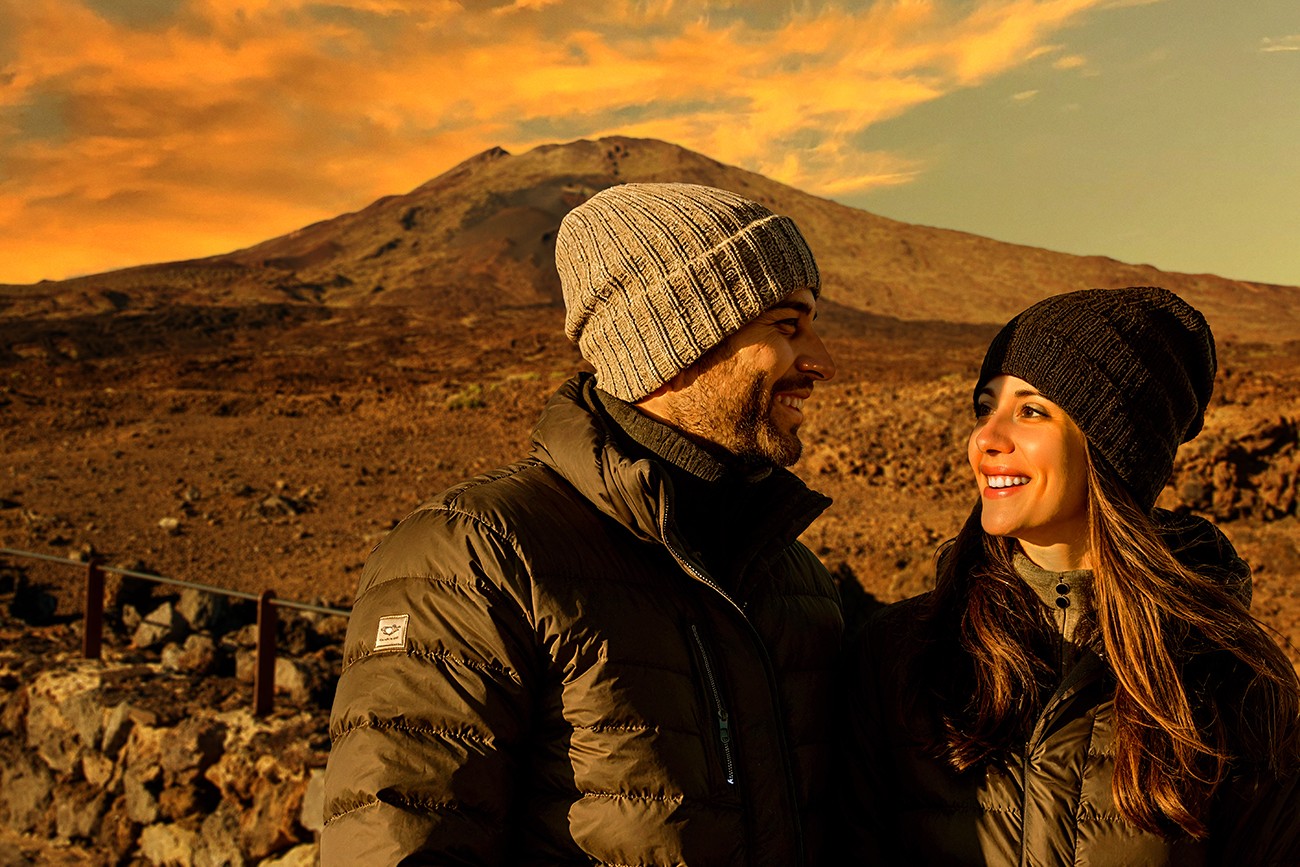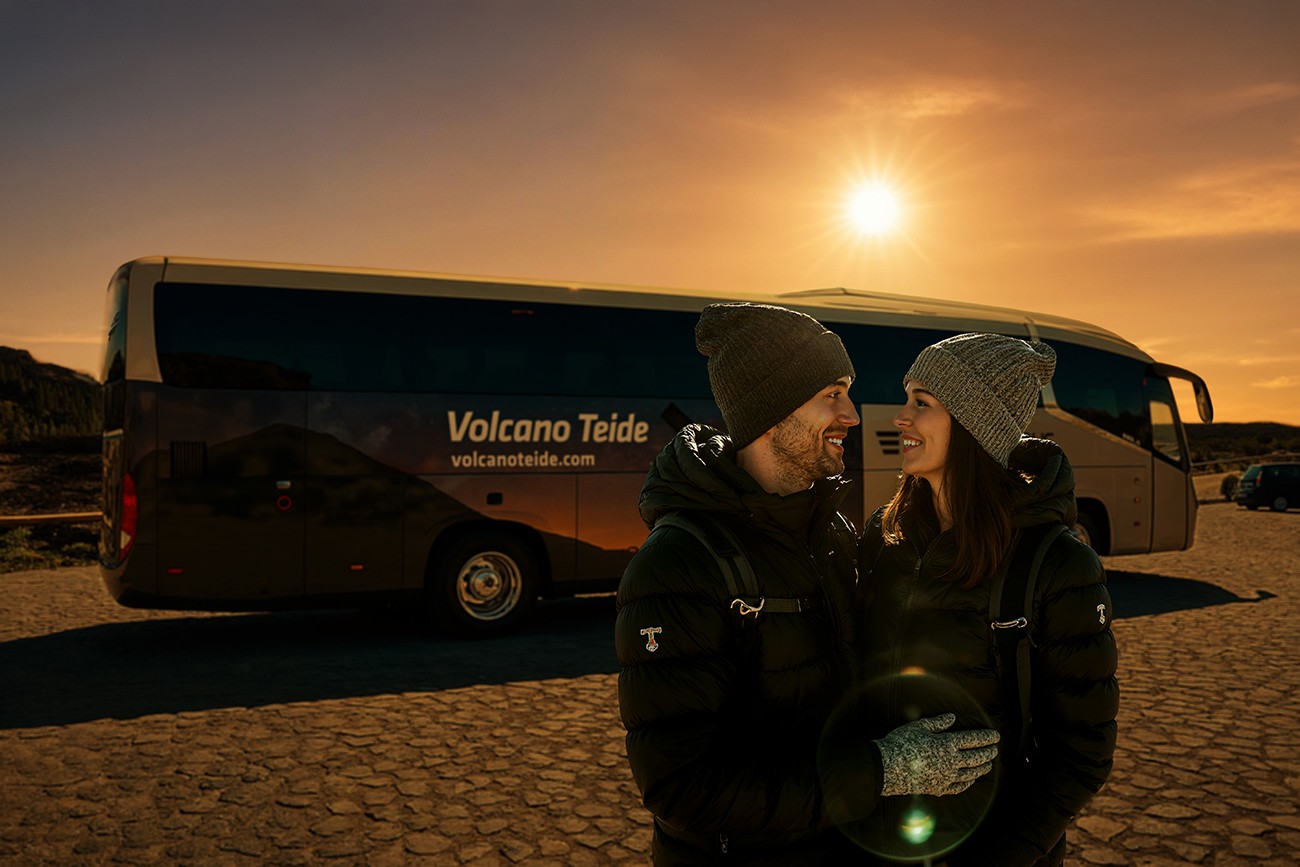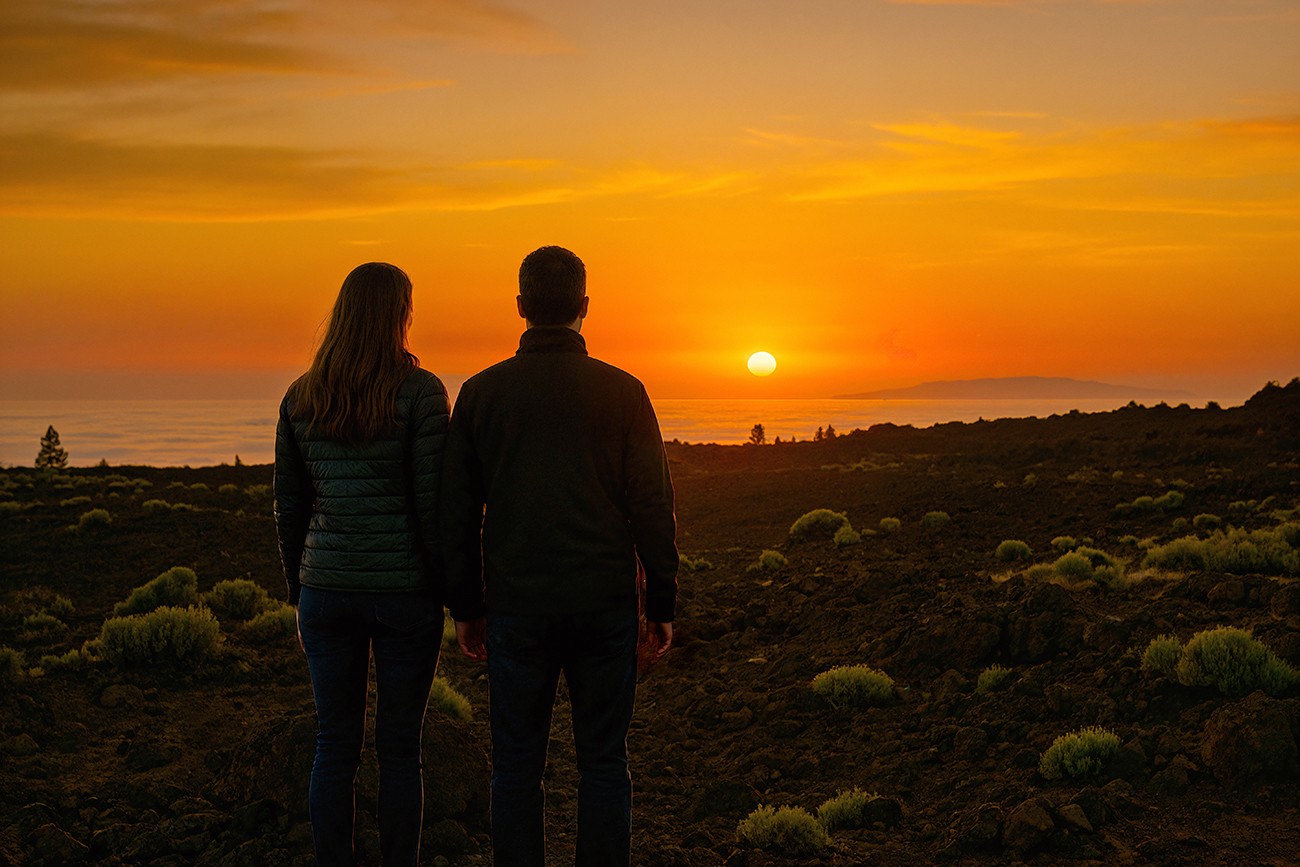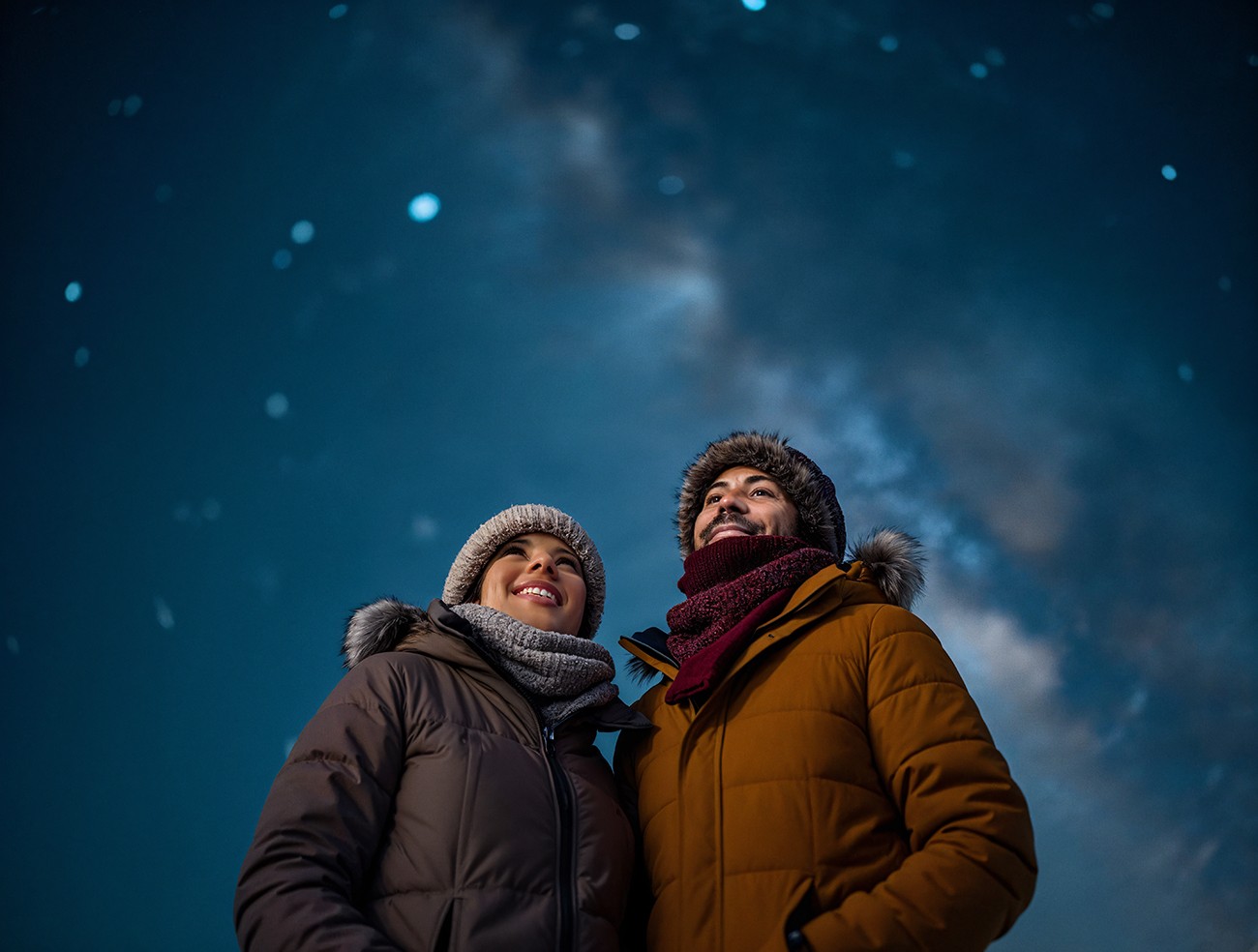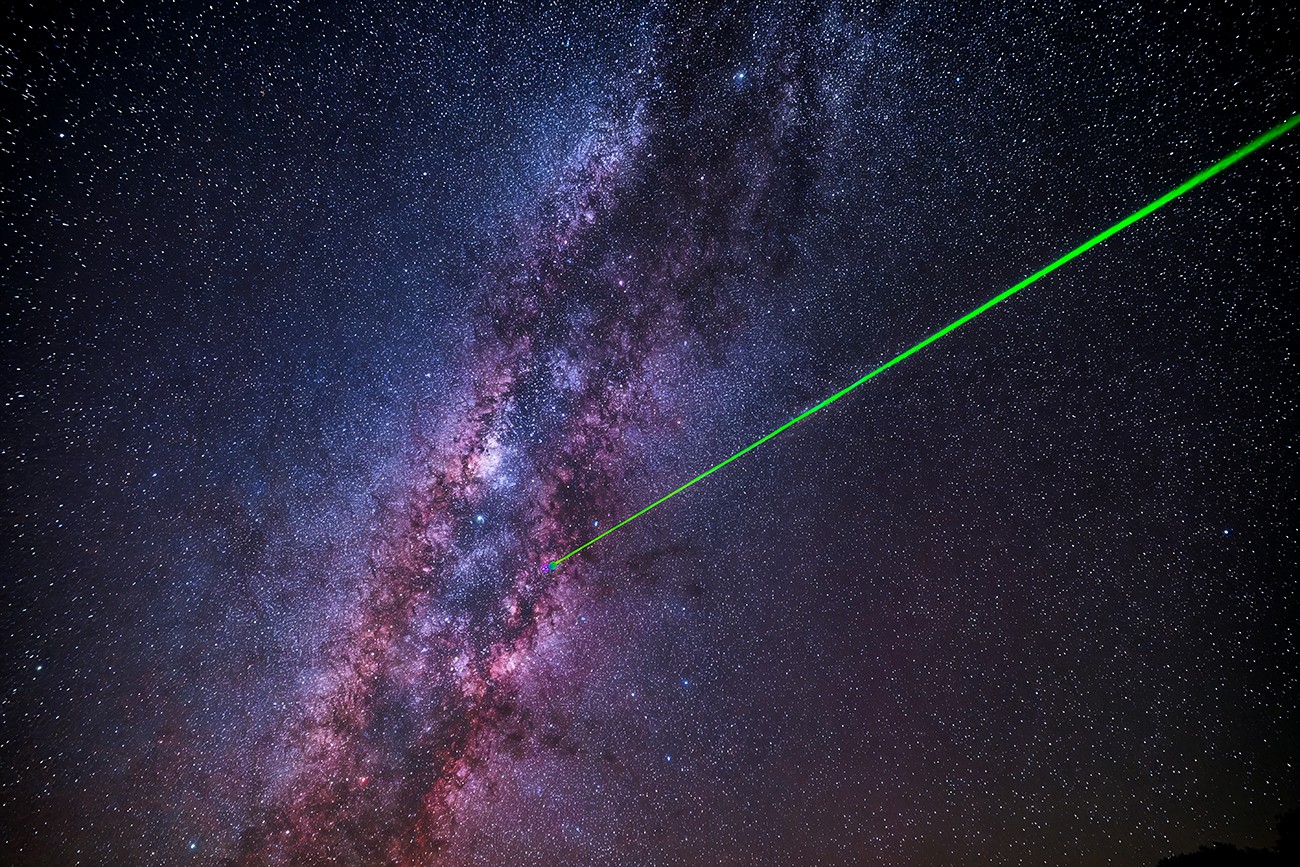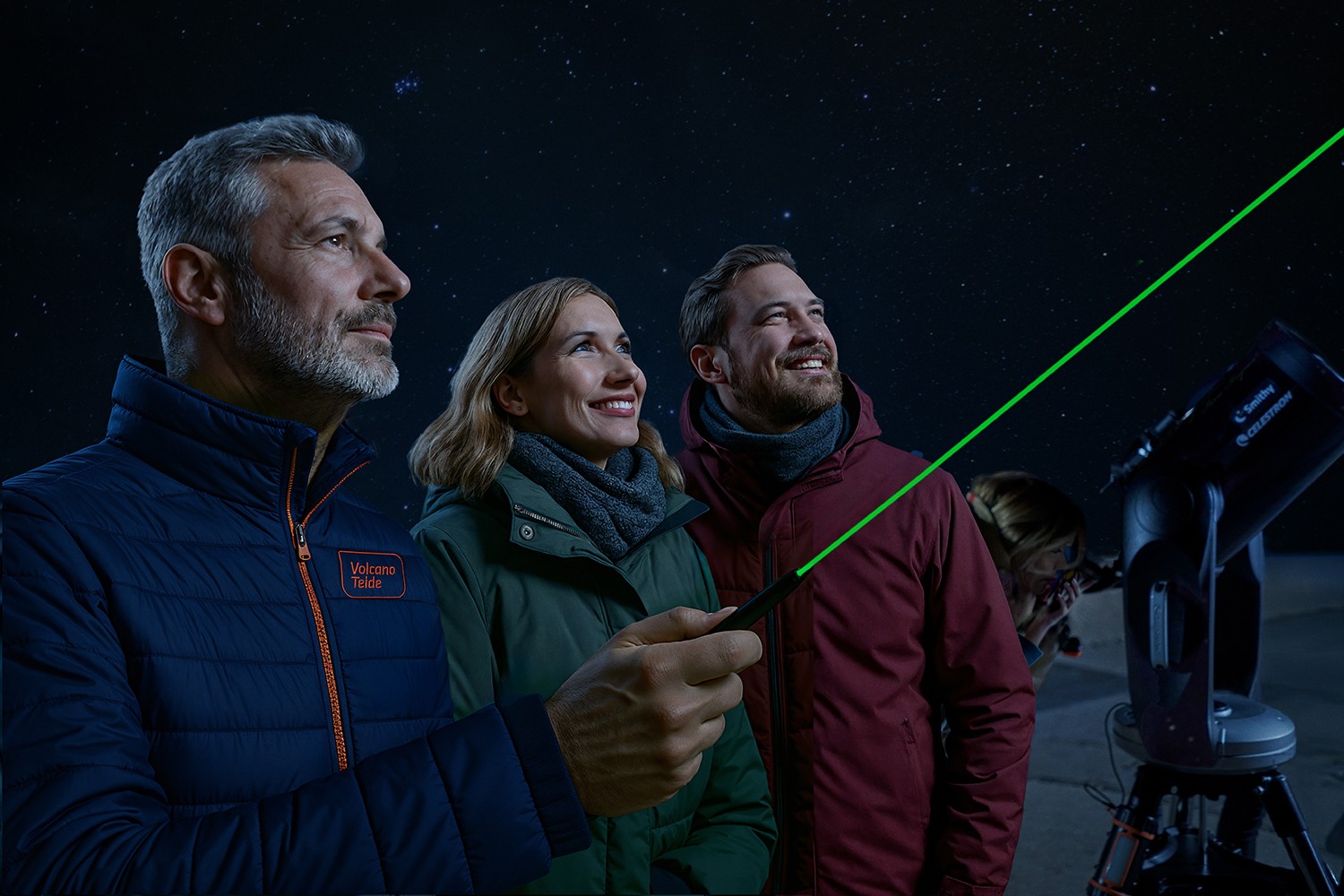- Excursion to visit Mount Teide by night
- Stargazing on Mount Teide using professional equipment
- Behold the sunset from a viewpoint in the National Park
- Let certified astronomical guides unravel the sky’s mysteries for you
- Visit Mount Teide on a night trip to one of the three best skies in the world to gaze at the stars
- Round-trip transportation from a meeting point near your hotel
- Professional observation of the Universe using long-range telescopes
- Certified Starlight guide in Spanish or English
- Sunset from a viewpoint before the astronomical observation
- Picnic-style Teide-dinner (optional)
- Starlight guide in other language than indicated
- Teide Cable Car tickets. If you wish to enjoy the experience with cable car included, we recommend Sunset & Stars.
- Night hiking on Mount Teide
Information
Pick-up points and hours
The schedule depends on the collection point which you indicate when making your reservation, and varies throughout the year, depending on the sunset time. Once you have formalised your reservation, we will inform you of the pick-up time and location.
Would you like to know your assigned pick-up time?
Restrictions
Children under 8 are cannot participate in the Mount Teide by night trip. Proof of age is required.
- Pets are not allowed.
Important information
- All our guides are astronomical guides certified by the Starlight Foundation.
IT IS ABSOLUTELY NECESSARY TO PRODUCE THE BOOKING CONFIRMATION, EITHER PRINTED OR DISPLAYED ON A MOBILE DEVICE.
For organisational reasons, the schedule may be modified and notified.
Prepare for your visit
To make the most of your Mount Teide Night Tour, please follow our recommendations:
- Wear warm, comfortable clothing and proper footwear.
- If you have health problems, consult with your doctor before undertaking this activity.
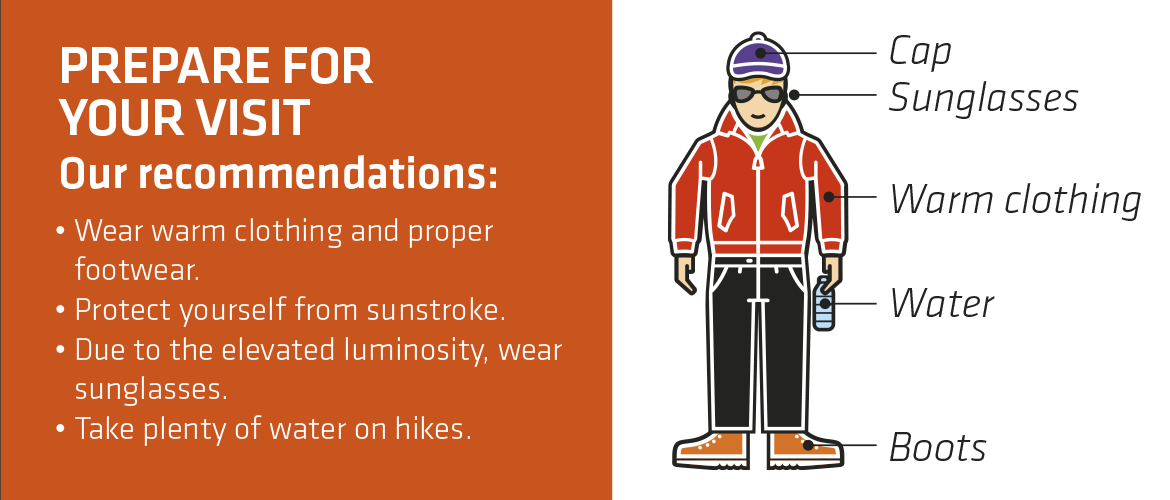
Changes and cancellations
Our facilities
Special rates
Menu
Book your Mount Teide Night Tour
Pick-up from the south + picnic
Pick-up from the north + picnic
Pick-up in the south
Pick-up in the north
Where to find us
Location
FAQs
How long does the Mount Teide Night Tour last?
Which viewpoint in Teide National Park will we watch the sunset from?
Where does the astronomical observation included in the Mount Teide Night Tour take place?
What telescopes are used for astronomical observation during the Mount Teide Night Tour?
Does the Mount Teide Night Tour include round-trip transportation?
Can I change the date of my Mount Teide Night Tour reservation?
Can I ascend Mount Teide by cable car on the same day with this excursion?
Do I need to print the booking confirmation of my Mount Teide Night Tour?
Is it possible to combine the Mount Teide Night Tour activity with a stay in the Altavista Refuge or at the Parador hotel?
Are pets allowed on the night tour to Mount Teide?
What can I do on Mt Teide any day of the week?
Reviews of the Tenerife stargazing tour
Pick-up in the south
Pick-up in the north
Pick-up from the south + picnic
Pick-up from the north + picnic
Description of the “Teide at night” trip
Description
An excursion to Mount Teide by night that you’ll find fascinating
Much has been said about the spectacular landscape of the Teide National Park, but the transformation it undergoes when the sun sets is rarely mentioned. Our Mount Teide Night Tour wants to show you exactly that: the array of colours that adds beauty to the horizon at sunset and dyes the sky dark to expose 83 of the 88 constellations known to man.
On your way up to visit Mount Teide by night, you will see how the plant life changes with the increasing altitude. The transformation in the landscape as you ascend is truly astonishing—you will feel as if you have crossed several continents in a journey of no more than one or two hours.
Depending on the route you follow on your Mount Teide Night Tour, you will cross rural landscapes, laurel woods and pine forests. On Las Cañadas, you will find types of broom, laburnum, rosalillo de cumbre (Pterocephalus lasiospermus), and flixweed—just a few of the plants that thrive most prolifically on Tenerife’s high scrublands.
If you’re in luck, you will see tiny, harmless bats fluttering around you as the sun sets. These winged mammals have spent the day hiding in the National Park’s underground network of volcanic tunnels. The volcanic tunnels are the channels through which lava once flowed, and they are the kingdom of the troglofauna. These small invertebrates are mostly blind as they live in complete darkness, but their other sensory organs have developed great sensitivity, so they have exceptional sense of smell, touch or hearing. The majority of them are endemic to Las Cañadas, and a few are found exclusively in one particular volcanic tunnel, and nowhere else in the entire world.
Please remember that night hiking activities on Teide are not possible on this excursion. If you would like to do a hike, choose one of our day excursions that include hiking routes.
So, can you ascend Teide at night?
Well, that depends on what you mean by ascending Teide at night. Yes, you can ascend Teide and go stargazing from the cable car base station, an experience that is included in the “Teide at night” excursion. However, please bear in mind that this night tour to Mount Teide does not use the cable car to ascend Teide and reach the trails at the top station.
What if you want to see the stars from Mount Teide by night, and also ascend to 3,555 m at sunset? Then our exclusive Sunset & Stars night excursion is just what you’re looking for!
Sunset & Stars gives you the chance to ascend Teide by cable car, outside of its normal opening times. You will travel in a small group to watch an unforgettable sunset and see the giant, 3,718-m-high volcano cast its pyramid-shaped shadow across the sea. You’ll enjoy visiting La Rambleta, at an altitude of 3,555 m, and watch a spectacular sunset from the trail to Pico Viejo Viewpoint, a spot with breathtaking views. And that’s not all—after this exceptional experience, you will then go stargazing from the base station. What’s more, the excursion includes a picnic-style dinner of Canary Islands food.
If you would like to find out about more excursions to Mount Teide by night and view the prices for these experiences, please check all our stargazing excursions.
A Mount Teide Night Tour with sunset and astronomical observation to visit Mount Teide by night
Before you begin your “Teide at night” stargazing experience, you will have toured a good part of the National Park and, from some impressive viewing point you will have seen a sunset that will remain in your memory for many years to come. In the dying light, the volcanic landscape takes on colours and hues of the utmost beauty. The spectacular, oval Las Cañadas caldera (one of the biggest volcanic calderas in the world with a perimeter of 45 km) spreads out before your eyes. In its centre stands Mount Teide volcano, an immense stratovolcano, rising to 3,718 m. Everywhere you look, you will see all kinds of lava deposits clothing large areas of the caldera, the product of eruptions stretching back over thousands of years.
During your tour, you will see rounded volcanic cones covered in pumice stone, others covered in charcoal and ash, some turned black or a reddish colour by oxidisation, tongues of lava that hang from the sides of the volcanoes, and huge blocks of stone (in which you can see traces of gleaming obsidian) strewn haphazardly around.
To tour Las Cañadas del Teide at night, before your exploration of the planets and galaxies, is to take a geological journey back over 180,000 years in one of Earth’s most remarkable volcanic landscapes. And if there happens to be a full moon, you will discover the most amazing lunar landscape. It’s a “Teide at night” experience that has it all!
You’ll be pleased to know that this excursion to Teide at night also includes a stop for dinner. You can choose whether to bring your own snacks, or to book the Mount Teide Night Tour with a picnic included.
Is there any better way to visit Mount Teide by night than on this night excursion to Teide that includes ascending Teide at night to the cable car base station at Las Cañadas del Teide, at an altitude of 2,356 m? And once there, seeing the stars in one of the best skies in the world for astronomy?


